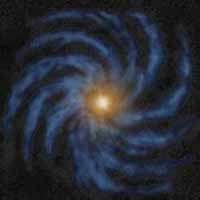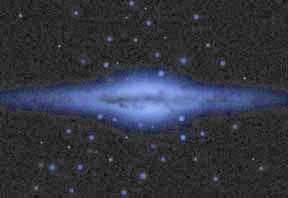Akhushtal: the goddess of Childbirth.
Bacabs: the bacabs are the canopic gods, thought to be brothers, who, with upraised arms, supported the multilayered sky from their assigned positions at the four cardinal points of the compass. (The Bacabs may also have been four manifestations of a single deity.) The four brothers were probably the offspring of Itzamn , the supreme deity, and Ixchel, the goddess of weaving, medicine, and childbirth. Each Bacab presided over one year of the four-year cycle. The Maya expected the Muluc years to be the greatest years, because the god presiding over these years was the greatest of the Bacab gods. The four directions and their corresponding colours (east, red; north, white; west, black; south, yellow) played an important part in the Mayan religious and calendrical systems.
Mayan god of rain, especially important in the Yucatan region of Mexico where he was depicted in Classic times with protruding fangs, large round eyes, and a proboscis-like nose. In post-Classic Mayan and Toltec ruins, reclining figures known as the Chacs Mool are thought to represent the rain god. Following the Spanish conquest, the Chacs were associated with Christian saints and were often depicted on horseback.
Cit Bolon Tum: a god of Medicine.
Cizin (Kisin): “Stinking One”; Mayan earthquake god and god of death, ruler of the subterranean land of the dead. He lives beneath the earth in a purgatory where all souls except those of soldiers killed in battle and women who died in childbirth spend some time. Suicides are doomed to his realm for eternity. He may possibly have been one aspect of a malevolent underworld deity who manifested himself under several names and guises (e.g., Ah Puch, Xibalba, and Yum Cimil). In pre-Conquest codices, or manuscripts, the god of death is frequently depicted with the god of war in scenes of human sacrifice. One aspect of the dualistic nature of the Mayan religion is symbolically portrayed in the existing codices, which show Cizin uprooting or destroying trees planted by Chac, the rain god. Cizin is often depicted on pottery and illustrated in the codices in the form of a dancing skeleton, holding a smoking cigarette. He is also known by his death collar, the most prominent feature of which consists of disembodied eyes dangling by their nerve cords. After the Spanish Conquest, Cizin became merged with the Christian devil.
Ekahau: the god of Travellers and Merchants.
Itzamn : “Iguana House”;, principal pre-Columbian Mayan deity. The ruler of heaven, day, and night, he frequently appeared as four gods called Itzamn s, who encased the world. Like some of the other Mesoamerican deities, the Itzamn s were associated with the points of the compass and their colours (east, red; north, white; west, black; and south, yellow). Itzamn was sometimes identified with the remote creator deity Hunab Ku and occasionally with Kinich Ahau, the sun-god. The moon goddess Ixchel, patroness of womanly crafts, was possibly a female manifestation of the god. Itzamn was also a culture hero who gave humankind writing and the calendar and was patron deity of medicine. See also Bacab.
Ix Chel (Ixchel): the goddess of the Moon.
Ixtab: the goddess of the Hanged. She receives their souls into paradise.
Kan-u-Uayeyab: the god who guarded cities.
Kinich Kakmo: the Sun god symbolised by the Macaw.
Kisin: see Cizin
Kukulcan: the Wind god, who is recognizable in Classic reliefs is the Feathered Serpent, known to the Maya as Kukulcan (and to the Toltecs and Aztecs as Quetzalcoatl). Probably the most ubiquitous of all is the being known as Bolon Tzacab (first called God K by archaeologists), a deity with a baroquely branching nose who is thought to have functioned as a god of royal descent; he is often held as a kind of sceptre in rulers’ hands.
Mitnal: Mitnal was the underworld hell where the wicked were tortured.
Nacon: Nacon was the god of War.
Tzultacaj (Tzuultaq’ah): For the Mayan Indians of central Guatemala, known as Kekch , this was the god of the mountains and valleys.
Yaxche: Yaxche is the Tree of Heaven under which good souls rejoice.
Yum Kaax: the Maize god.
Milky Way


Mayans seem to have thought of the Milky Way as the mystic road along which souls walk into the Underworld. Crossing the Milky Way at the constellation Scorpio is the ecliptic, the apparent path of the sun, moon, and planets as they move against the background of stars.
Mayans tracked their creation stories in relation to the movement of the stars across the heavens. They believed that the point at which the Milky way appeared as a vertical band in the night sky represented the moment of creation.
Mars
Mayans were sophisticated observers of the sky. Mayans used their astronomical knowledge to predict future human events. They were aware of the movements of Mars. In one of the ancient Mayan books, Mars is represented by a series of pictures of a long-nosed beast shown descending to varying depths from a sky band.